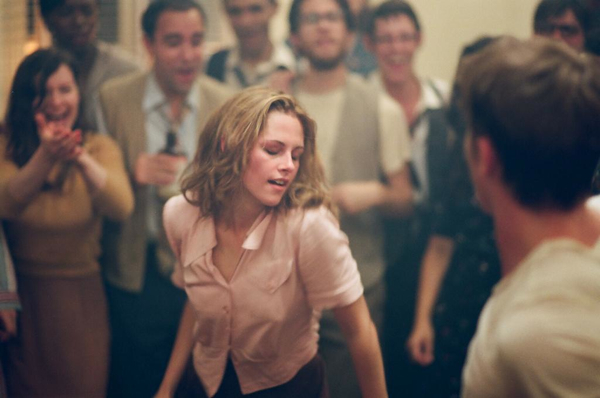Movie review by Greg Carlson
Any film adaptation of Jack Kerouac’s “On the Road” would have a tough time living up to the unrealistic expectations ascribed to the cult book, and Walter Salles’ decent effort at least stays between the ditches. Neither an embarrassing letdown nor a transcendent prize, the movie – much like Salles’ version of “The Motorcycle Diaries” – uses really beautiful people to impersonate larger than life figures who might not have been quite as physically glamorous. Salles perhaps makes an argument that “On the Road” is not, after all, unfilmable, but aside from a few judiciously selected quotations, the movie sorely misses the rhythm and poetry of Kerouac’s words and voice.
The legend and reputation of “On the Road” cast a skyscraper-sized shadow over the film. The devoted will await every arrival of a figure immortalized by JK (as in, “there’s Viggo Mortensen playing Old Bull Lee who was really William Burroughs!”). The uninitiated might be less charitable, given Salles’ fondness for sticking all sorts of ace thespians in one-off scenes of economized duration. Along with Mortensen, the support ensemble includes Amy Adams, Kirsten Dunst, Elisabeth Moss, Terrence Howard, and Steve Buscemi, who, other than Dunst, mostly disappear in a blink.
The principals are allotted enough screen time to develop some semblance of character and both Kristen Stewart as Marylou and Garrett Hedlund as Dean Moriarty suggest glimmers of the magnetism and charisma that so attracted narrator Sal Paradise to each. Both performers leave a more lasting mark than Sam Riley, whose portrayal of Kerouac avatar Paradise is unobjectionable if unexceptional. Hedlund’s enthusiasm suits the grinning hedonism of Kerouac’s fictionalized version of Neal Cassady, although Salles, working from a script by Jose Rivera, holds Dean at a distance that somewhat diminishes the impact of the character’s fate and prevents the viewer from seeing him as anything more than a symbol of childlike/childish insatiability.
Not surprisingly, the inherently masculine point of view gives Salles some trouble and the director struggles to see the women of “On the Road” beyond the narrow option limited to sexually available vessel or bitter, nagging anchor. In one of the movie’s saddest scenes, the selfish and perpetually irresponsible Dean invites wife Camille to go out on the town, even though he knows she has no choice but to stay home with their baby. For all the heat generated by the rejection of societal norms, the birth of the Beat universe as canonized in popular culture marginalizes the contributions of women.
The post-WW2 period detail is effectively communicated via the costumes and cars if not the coiffures, but “On the Road” could use a more liberal dose of the Benzedrine, booze, and marijuana-fueled orgies that represented such a shocking rejection of conventional behavior in that small window of time before rock supplanted jazz as rebellion’s aural stimulant of choice. Even the experimental sexual bi-curiosity is presented with chaste, white glove decorum that never delivers on an early Signet edition’s cover copy come-on promising to tell us “all about today’s wild youth and their frenetic search for experience and sensation.”
